STRANDS & STRUCTURES, an immersive photo-documentary urging a conversation on the intricacies of urban life in Accra
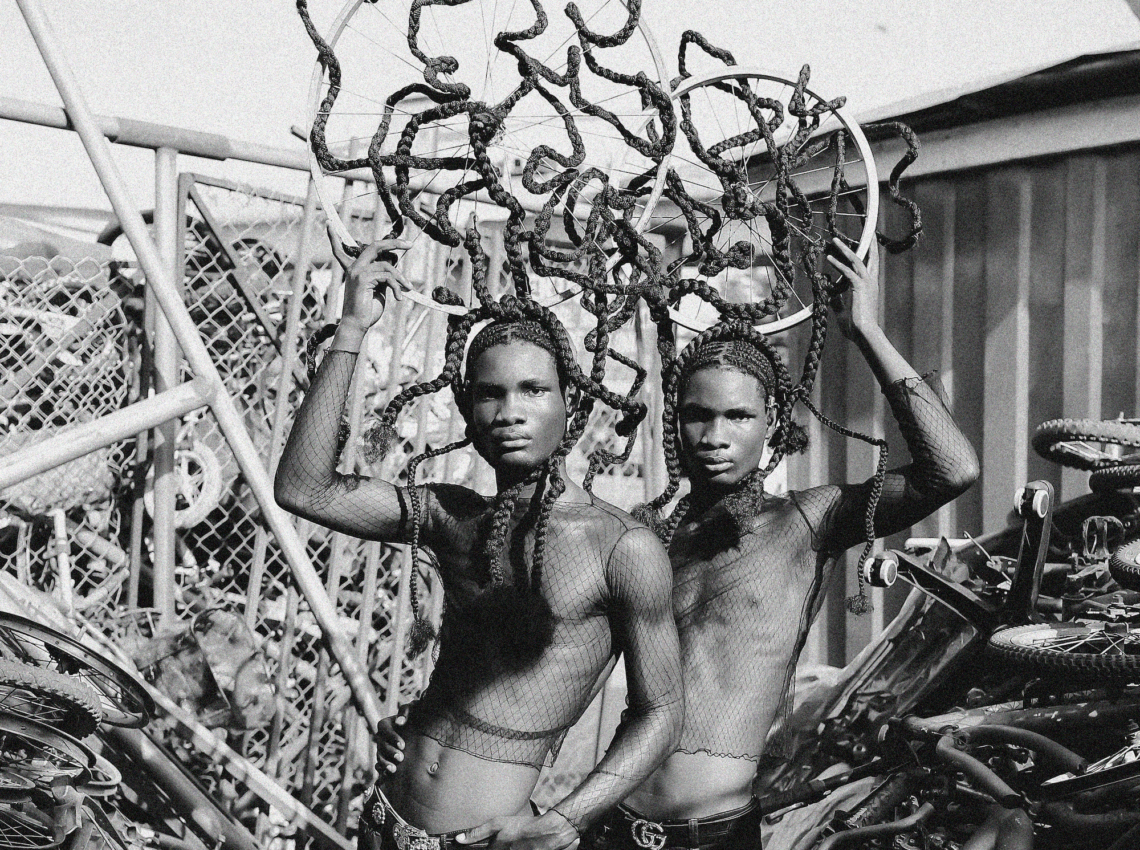
STRANDS & STRUCTURES, an immersive photo-documentary exhibition by Concept Hair Artist Asia Clarke and Photographer Christian Saint. STRANDS & STRUCTURES unravels the intricate connections between our hair, our bodies, and the vibrant Anthropocene of Accra through photography. In this exhibition, we leverage the multifaceted storytelling power of the African hair aesthetic to delve into our place within structural, economic, and environmental realities.
Accra, and by extension Ghana, is experiencing a cultural renaissance. Through STRANDS & STRUCTURES we are urging a conversation on the intricacies of urban life in Accra, weaving and connecting selected themes. Through the photographers lens and through hair as a visual language, the exhibition navigates six focal areas: AIR POLLUTION, WATER POLLUTION, TRANSPORTATION, ENERGY, CONSTRUCTION, and MARKET ECONOMY. We believe it is important to celebrate Ghana’s greatness, while remaining connected to the intertwining social, economic and environmental circumstances of the land that we all love.
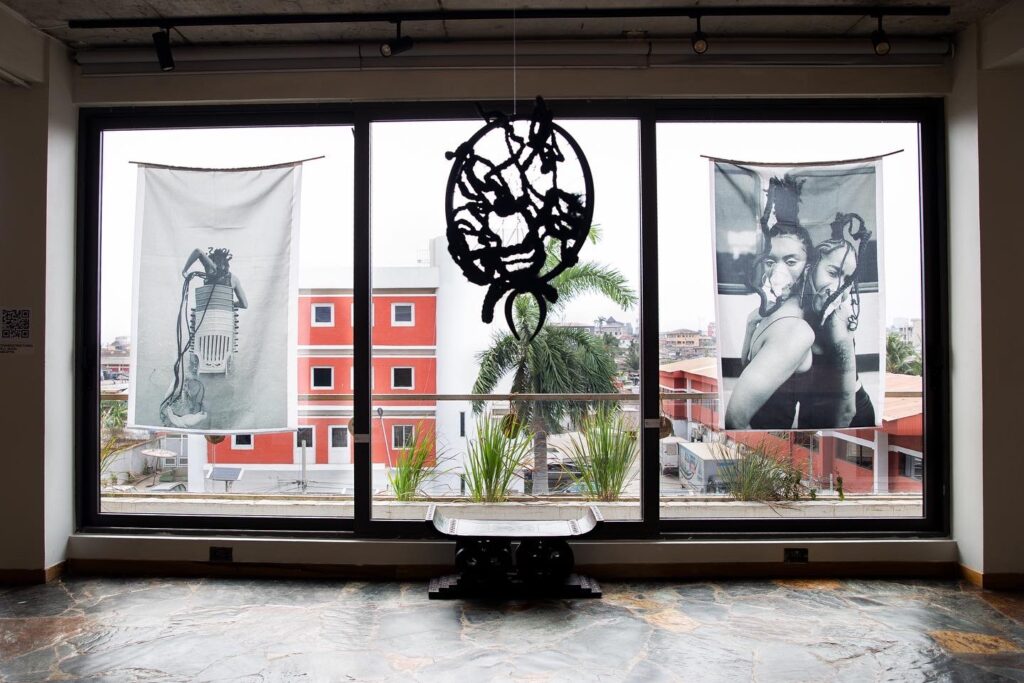
The exhibition consists of (1) photo documentary series, (3) interactive arts installations, (3) community building activations, (4) research repository and (5) interview soundscape and event soundtrack.
Q1 – What brought this collaboration together?
A: Since visiting Accra, Ghana in 2016 and then moving in 2020, I’ve been keenly interested in Ghana’s development – both socially and environmentally. I am a multi-disciplinary artist and hairstylist of Afro-Caribbean descent, and it is well known that we Caribbeans see Africa as a motherland that we always yearn to reconnect with. When I came to Ghana the first time, I had a feeling that this was where I was supposed to be.
I have been embraced by and built community within Accra’s art scene for several years now. I have had the privilege to work on so many cool projects with amazing creatives. After the 2019 “Year of Return” Ghana was buzzing – celebrities, influencers, and many people across the diaspora wanted to come to Ghana and experience the culture. However, that attention and expansion has had a lot of negative side effects for the local community. There was a lot of talk online about people from abroad, coming to Ghana and taking their photo ops, not caring for the actual issues that people face here. Furthermore, economic inflation, gentrification, environmental degradation and human rights are among a few issues which have arguably gotten worse in Ghana since the Year of Return. I wanted to create a project that addresses these issues in a creative way, encouraging people to situate themselves in the reality that every day Ghanaians face.
As a hairstylist, African hair aesthetics are very important to me. I think it symbolizes personal pride and identity, which gives it a unique ability to tell stories about who we are. The idea to create hair sculptures in public spaces came to me one way as I was driving in my old neighbourhood of Teshie in early 2022. At the time, I had just found out I was pregnant with my son. So I was feeling extra creative and hopeful. I reached out to Christian to collaborate with me as the photographer for the project, and luckily he said yes. We’ve through a lot of ups and downs in the nearly 2 years since we started, but it has bloomed into a successful exhibition that has surpassed our wildest dreams. STRANDS & STRUCTURES Photo Documentary Exhibition opened at The Mix Design Hub Gallery on January 5 2024 to a great reception, and the rest is now history.
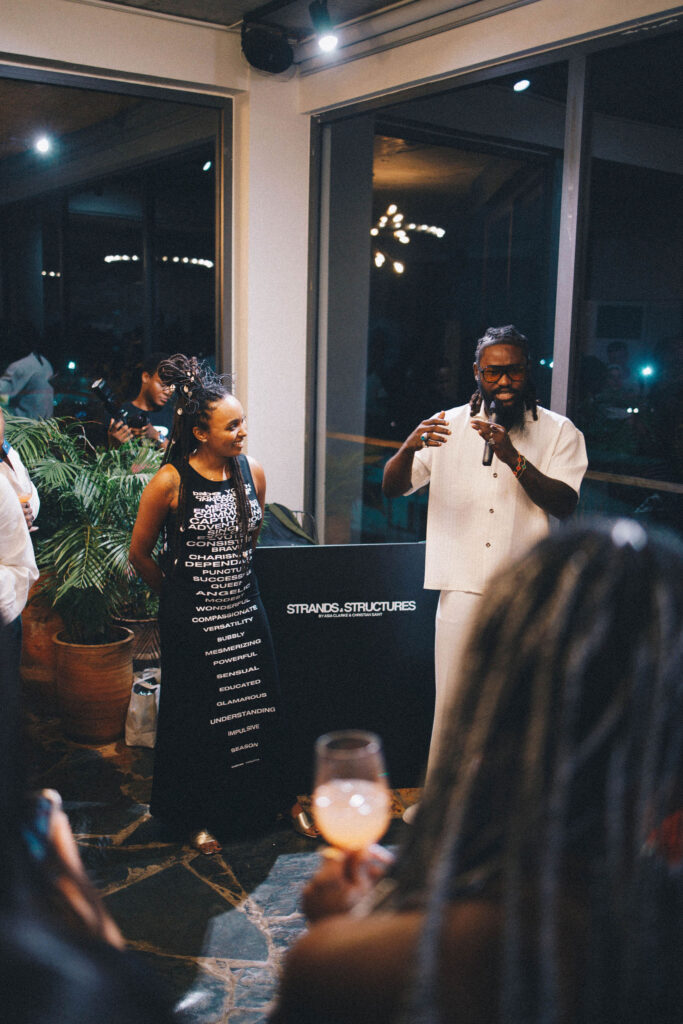
C: I am a Ghanaian Creative Director and Photographer, and I’ve been working between Accra and Dubai for years now. I’ve always wanted to work on a project that really captures the land where I come from.
In early 2022 Asia reached out to me, and spoke about her intentions and how she wanted to go about the project. At first it was a skeleton of an idea, but we took our time to work together to flesh it out. I was especially interested in collaborating with her on this project because I was born and raised in Accra, so the issues she was highlighting has been my every day life. As a patriotic Ghanaian, and as a storyteller, I felt like it was my responsibility to make such a project.
This is the first time I’ve worked on a project where the social impact can really be felt. Asia had an execution plan, but she needed an image maker that understood the essence of the story. As a citizen of Ghana, I felt it was my responsibility to use my talent as an image maker to bring attention to environmental issues and contribute to the social good in my country. Even when we went into locations to shoot, we spoke to people who really care about their families and communities. We wanted to honour that by making a well thought out and well researched project that could have lasting impact for years to come.

Q2 – What was one of the most interesting things you learned during the research phase of this project?
A: In each place that we did a photoshoot, we also did an interview with a local resident to hear the story of the space and to hear their opinion on the environmental issue we were touching on. For this project we focused on 6 key areas: AIR POLLUTION, WATER POLLUTION, TRANSPORTATION, ENERGY, CONSTRUCTION and MARKET ECONOMY.
What I found most interesting is how many of these issues intersected. An example is when we did the photoshoot at the Tudu Market on the topic of Market Economy. The shop owner we interviewed spoke about economic challenges they face at the market, but he also made mention about how during rainy season, the gutters choked with plastic pollution causes flooding, damaging their stock and shops. Similarly, when we interviewed the bicycle shop owner on the topic of Transportation, he made mention about the construction project on the nearby highway was affecting shop owners in the area. We cannot separate ourselves from these issues, and the issues themselves are also interconnected.
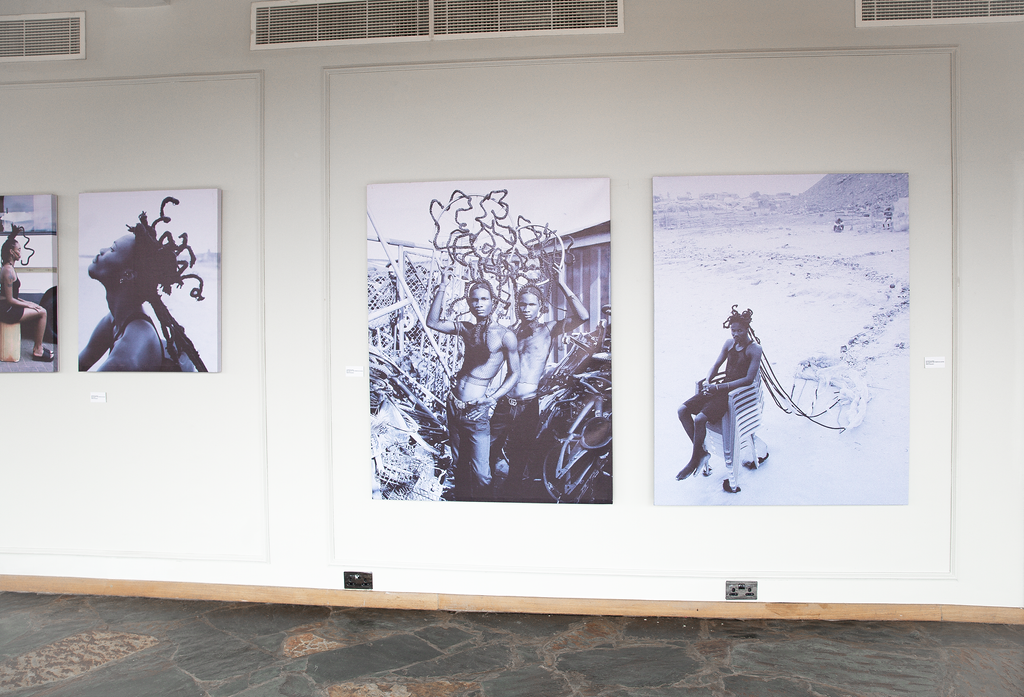
C: One thing that I learned was as a creative living in Accra, some of the issues I had not really noticed. Even though I grew up in the slums of Accra, the perspectives of other people living in different areas was very enlightening. From where I lived, I couldn’t understand what other people were also going through.
For example, when we did the shoot on Water Pollution at the beach behind Accra Art Center, we did an interview with a man named Obolo Kofi. He has made it his responsibility with his community members to regularly clean up the plastic waste that washes up on the beach. However, a private company has come to start construction on a beachfront shopping promenade, which is now displacing people who live and have shops there. Right now, the beach has mounds of collected garbage heaped into piles at least 15 feet high. This is not a new issue, but its just proof that all of these places have residents that have made it their responsibility to take care of the place, even though the land does not technically belong to them. Even when the government or private companies won’t come and clean the place, Obolo Kofi does it. That is the real meaning of community.
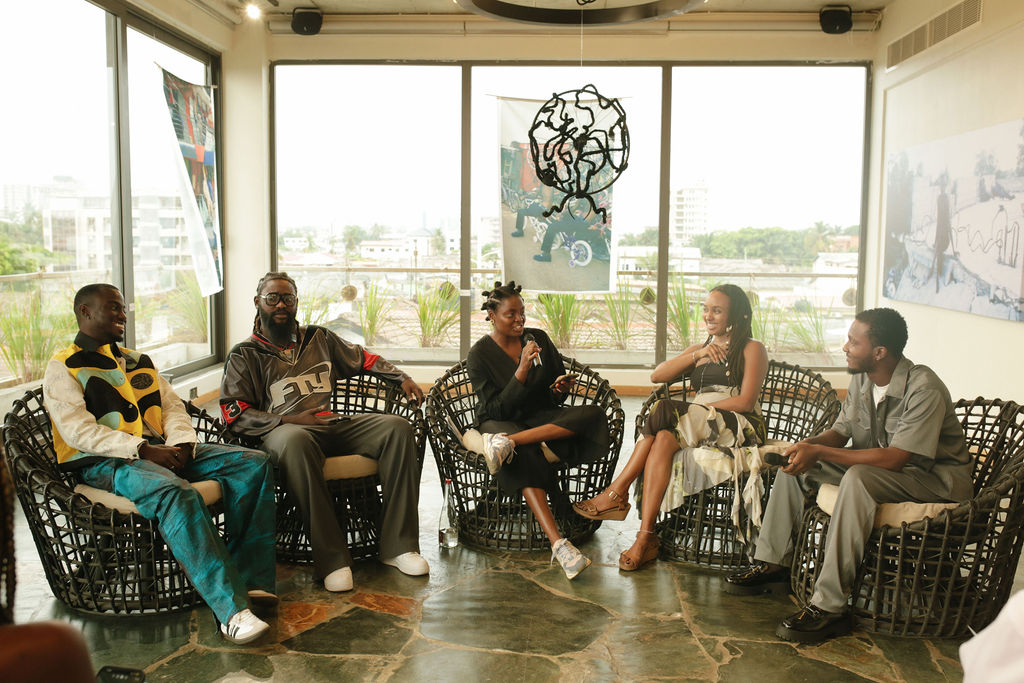
Q3 – What do you envision to be the legacy of this project?
C: As a patriotic Ghanaian, I’m proud that we have worked on this unique project that no one has done anything like this here before. That is why I applaud Asia especially – this project that she collaborated with me on, has helped put me in a unique authority on the fusion of art and social justice in my own home country.
We focused on environmental and urban development issues, but we still made it accessible, beautiful, authentically Ghanaian, and extremely successful. We also did this without any external funding, but we gave it our all as if we were being paid to do it. We innately saw the value of capturing this story, and I am glad it has reached the success it has gotten to thus far. To me, that is the legacy – proving that we can do a very impactful, independent and entirely self-funded project that has global resonance. We have impacted the African diaspora, as well as our local community. Inviting the Dzorwulu Junior High School students to have the opportunity to engage with the art as well as the research – not to mention a visit from Award Winning Ghanaian Rapper Sarkodie – we know we have given food for thought to all who have attended the STRANDS & STRUCTURES Photo Documentary Exhibition.
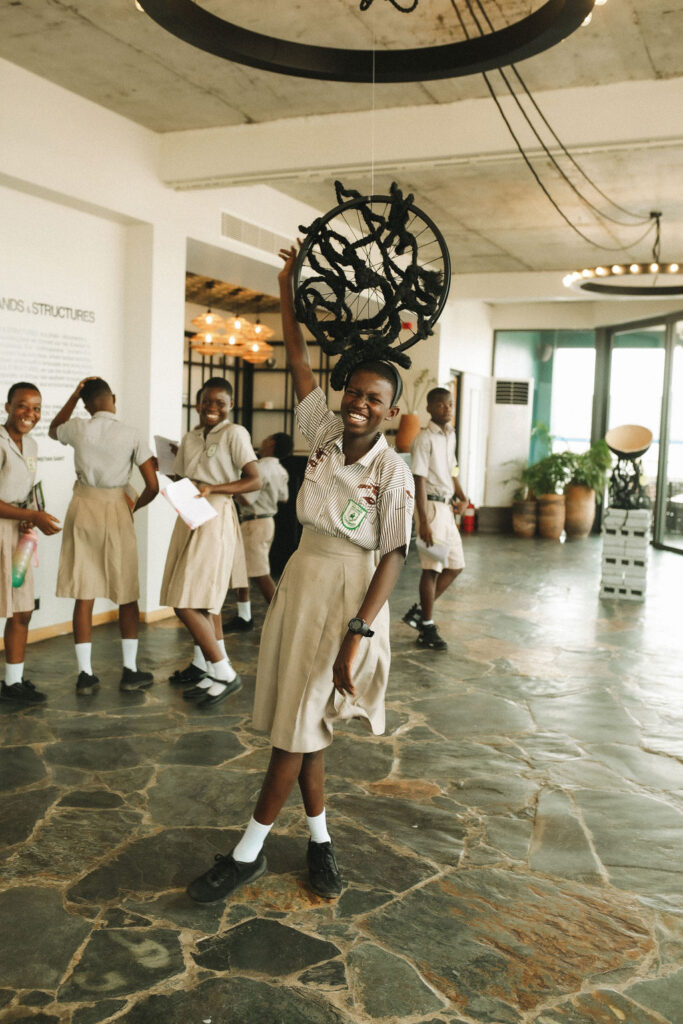
A: We hope to expand this project by travelling the STRANDS & STRUCTURES Exhibition around the world. It would also be very cool to expand the project by adding additional photoshoots in different cities that we visit, addressing environmental and urban development challenges that are unique to those spaces.
We have an online research repository, a soundscape, and a sound track that is available on all streaming platforms. We hope that people engage with the music and the research for years to come, and see our show as an inspiration to get involved in environmental initiatives in their localities.

ARTIST BIOS:
Asia Clarke | Creative Director & Concept Hair Artist @WILD_MOON
Asia Clarke is an Afro-Caribbean Multidisciplinary Artist, Designer and Hairstylist who centers sustainability and futures-thinking in her arts practice. She is passionate about re-envisioning futures and helping communities, clients and brands to envision and actualize their creativity. Her intricate hair designs have been published worldwide and featured in major publications such as Vogue Netherlands, Vogue Italy, Wall Street Journal, Bubblegum Club South Africa, Dazed Magazine, Wall Street Journal and Acne Paper. Her wide range of clients have included Burberry, Adidas, Apple, Kendrick Lamar, Free The Youth Ghana, and Daily Paper.
Christian Saint | Creative Director & Photographer @IAMKAPTIN
Christian Saint is a Ghanaian Multidisciplinary Artist, Film Director & Creative Producer who is deeply inspired by African imagery and the robust library of storytelling from the African continent. His belief is that as Africans, we are the custodians of our own history, and is dedicated to ending misrepresentation in media and creative space. He has worked on projects with Beats by Dre, Atlantic Records UK, Daily Paper, Rema, Faure Le Page, Lacoste, EMPIRE, DAZED, Chance the Rapper, Vic Mensa, Skepta, Davido, Sarkodie, etc. In addition, He had the opportunity of collaborating with forces in media that power and stimulate the creative mind, such as GQ, Complex, Hypebeast Arabia, The FADER and many others.
Photo Credit :
Erica Aryee ( @pxceria )
Richard Grande ( @iamgrande_)




![ZINO VINCI’S ‘FILTHY & DISGUSTING’EP BRINGS YOU TO THE CORE OF THE ARTIST [@ZinoVinci]](https://guap.co/wp-content/uploads/2023/10/Zino-4.jpg)


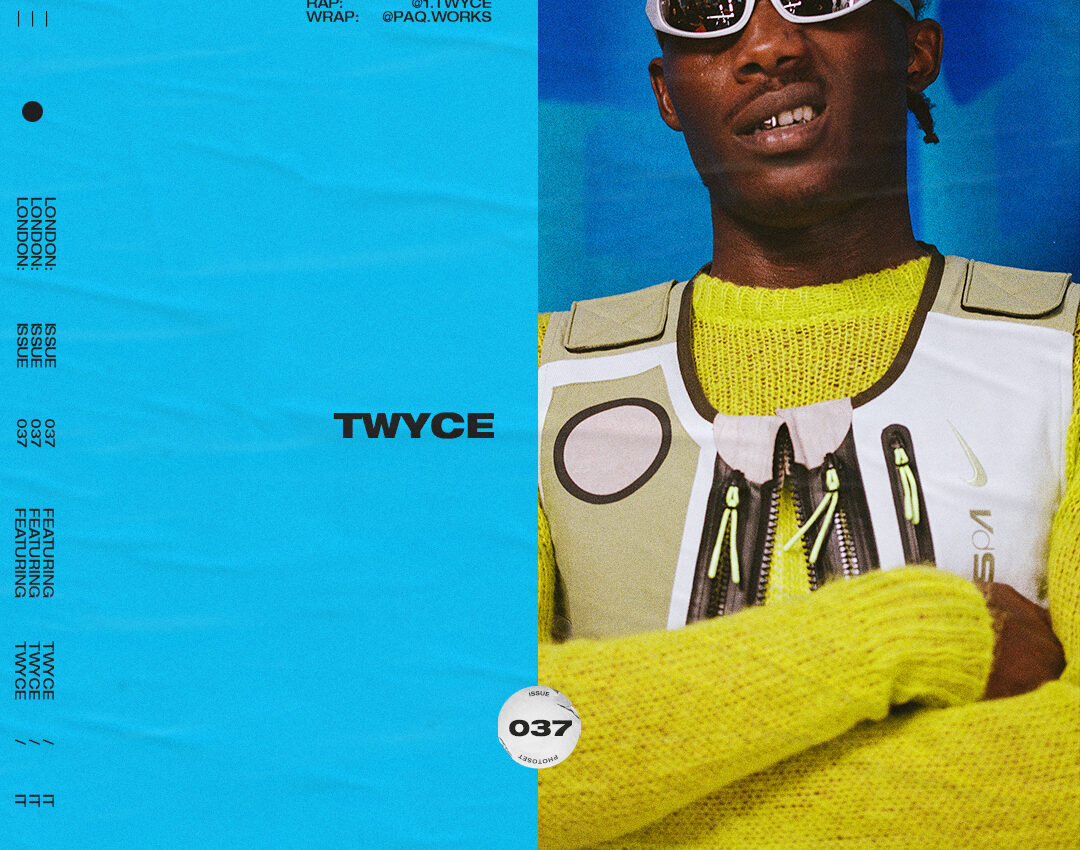


![Remel London’s [@Remel_London] “Mainstream” is a must attend for upcoming presenters!](https://guap.co/wp-content/uploads/2017/02/REMEL-LONDON-FLYER-FINAL-YELLOW-COMPLETE-1.png)